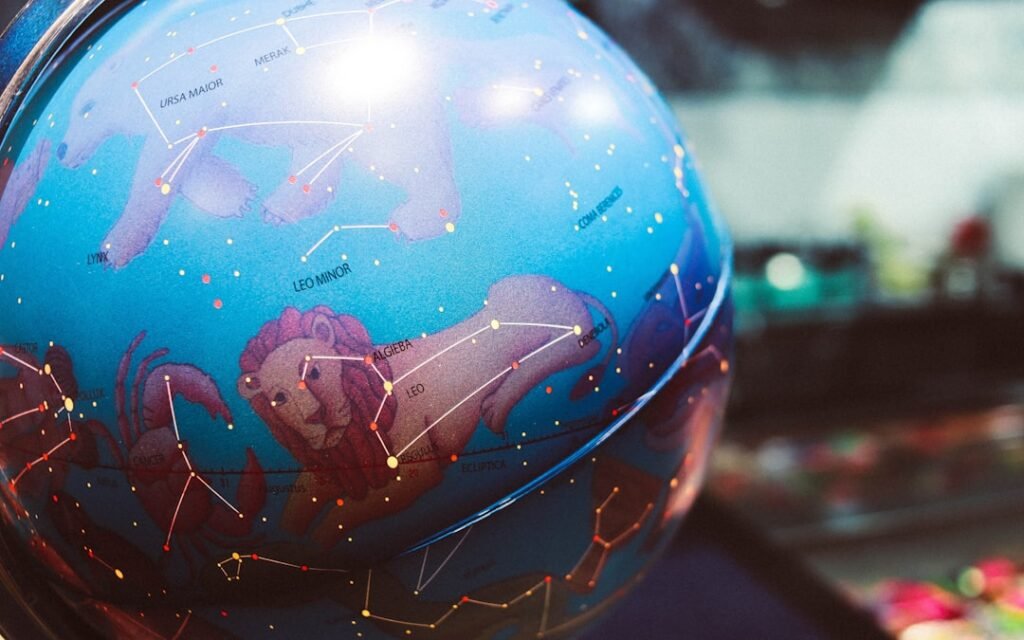Every zodiac sign seems to have an animal waiting in the wings, but Gemini’s is hiding in plain sight, flicking its tail and testing the rules. Meet the magpie: quick-thinking, restless, talkative, and dressed in stark black and white like a walking metaphor for duality. For centuries, people have argued over whether it’s a thief or a sentinel, a pest or a prodigy, a nuisance or a wonder. Science is finally catching up to the folklore, revealing a brain wired for flexibility and a lifestyle made for change. In a moment when adaptability is the difference between surviving and thriving, this mercurial bird is a fitting emblem for an air sign famed for curiosity and contradiction.
The Hidden Clues

What bird captures Gemini’s split persona better than a creature stitched in black and white and fueled by restless curiosity? Magpies toggle between bold and cautious in seconds, inspecting a glinting bottle cap one moment, sounding the alarm the next. Their constant chattering feels like broadcast news in feathers, a rolling feed of warnings, gossip, and location updates. Watch a pair team up to distract a dog while a third nabs a crumb and you’ll see strategy meeting spontaneity. I’ve seen this myself on a frost-bitten morning in Colorado, when two black-billed magpies treated a trail like a stage and a puzzle at once.
From Ancient Symbols to Modern Science

Long before field labs, magpies carried heavy cultural baggage: omens in some European rhymes, lucky messengers across East Asia, tricksters almost everywhere. That messy reputation fits Gemini’s two-sided myth – the mind that can hold two truths at once and toggle between them. Modern research, however, has reframed the bird as a bridge between folklore and cognition. In controlled tests reported in 2008, Eurasian magpies passed a classic mirror self-recognition paradigm, hinting at a capacity for self-awareness previously reserved for apes and dolphins. The result didn’t make magpies human; it reshaped how we understand nonhuman minds. The bird of contradictions turned out to be a bird of revelations.
Anatomy of a Split Personality

That crisp black-and-white suit isn’t just stylish; it’s a visual thesis on duality. Under the hood, magpies are corvids with enlarged forebrain regions tied to learning and flexibility, a neural setup that favors rapid problem-solving. They’ll raid a picnic in one neighborhood and cache food for lean months in another, adapting as quickly as city streets change. The popular shiny-object tale is more complicated than legend suggests; controlled tests have found caution around novel items, with curiosity rising only once safety is established.
Boldness and neophobia live side by side, blinking like turn signals in a mind built for hedging bets. Even their foraging swings between risk and restraint, as if the bird itself negotiates with its twin.
Signals, Speech, and Social Brains

Magpies do not just make noise; they run conversations in layers – alarm calls for predators, soft murmurs within family groups, harsh scolds for intruders, and mimicry that seems to surface when opportunity knocks. In crowded urban margins, these signals form an acoustic web that maps threats and opportunities across blocks. Social life is the gym where their cognition trains daily: pair bonds, kin alliances, and neighborhood hierarchies all demand mental bookkeeping. In experiments and field observations, individuals remember faces, routes, where food was cached, and who shared or cheated last time.
It’s no stretch to see the Gemini link: the mind that learns by cross-checking, context-switching, and keeping multiple threads in play. Talkative? Absolutely – but the chatter is data-rich.
Why It Matters

Magpies push scientists to rethink intelligence outside primates and lab-standard pigeons, expanding the map for how smarts evolve. They thrive across farms, suburbs, and city edges, making them living testbeds for questions about adaptability, innovation, and problem-solving under pressure. When a species can pivot between tactics – join a mob to evict a hawk, then quietly stash a food cache – it offers a blueprint for behavioral flexibility. Compared with traditional single-task models, magpies showcase multi-context cognition: memory for past interactions, predictions about rivals, and rapid learning in noisy environments.
That matters for conservation planning, where predicting behavior can be as important as counting individuals. It also matters for us; the skills they use to navigate human-dominated landscapes hint at how wildlife will cope with a century of flux.
Global Perspectives

The magpie is not a single story. Across Eurasia, the Eurasian magpie inhabits hedgerows and city parks; in western North America, black-billed magpies patrol ranchlands and neighborhoods; in Australia, a distantly related “magpie” fills a similar social niche with a different family tree. Cultural takes vary just as widely: emblems of good luck in some regions, harbingers of trouble in others, and sometimes both at once. Conservation status skews stable across many populations, but conflict flares where scavenging meets human expectations.
Research generally finds habitat change to be a stronger driver of songbird declines than corvid nest predation, pushing the conversation toward land use rather than scapegoats. In other words, the duality isn’t just in the bird; it’s in how we choose to see it.
From Ancient Tools to Modern Science

Today’s magpie science leans on technologies that would have baffled early naturalists: GPS pinpoints micro-movements, automated microphones log dawn choruses, and computer vision sifts hours of footage for rare behaviors. Bioacoustic algorithms now parse call types that human ears blur together, revealing context-specific messages and neighborhood dialects. In one striking field effort, Australian magpies cooperatively removed tracking harnesses from flockmates, a reminder that clever birds can outscore clever gear.
Across continents, community scientists upload photos and behavior notes, giving researchers massive, real-time datasets that capture urban and rural contrasts. The payoff is a sharper picture of how learning spreads within groups and how birds adjust when the rules of the street change. Put simply, we’re moving from anecdotes to analytics.
The Future Landscape

Expect the magpie to remain a frontline species for studying urban adaptation in a warming, densifying world. Miniaturized tags will map how individuals shuttle among feeding spots, nest sites, and safe perches, while privacy-preserving AI will translate vast soundscapes into behavioral timelines. Climate shifts may scramble food availability and breeding timing, testing whether flexibility can keep pace with extreme years and surprise weather. Cities will be laboratories of evolutionary change, where birds that learn fast, share information, and balance risk may outcompete specialists.
The challenges are real – misinformation about “pest” behaviors, habitat fragmentation, and the temptation to blame wildlife for human-caused imbalances. Yet the very ambiguity that frustrates us about magpies may be their superpower in the decades ahead.
How You Can Help

If the magpie is Gemini’s mirror, it’s also ours, reflecting how we manage the edge between wildness and our everyday routines. Start local: keep food waste sealed, secure shiny litter, and plant native shrubs that offer cover and natural forage. Share observations through community science platforms and neighborhood nature groups; those notes often become the first clues to shifting behaviors and hotspots. Support urban habitat projects that blend people space with bird space, because flexible species still need patches of safety to practice their smarts.
Most of all, talk about what you see – the quick pivot from scavenger to sentinel, the flash of curiosity that reveals a mind at work – and invite others to look twice. Who knew a black-and-white bird could teach us so much about living in a gray world?

Suhail Ahmed is a passionate digital professional and nature enthusiast with over 8 years of experience in content strategy, SEO, web development, and digital operations. Alongside his freelance journey, Suhail actively contributes to nature and wildlife platforms like Discover Wildlife, where he channels his curiosity for the planet into engaging, educational storytelling.
With a strong background in managing digital ecosystems — from ecommerce stores and WordPress websites to social media and automation — Suhail merges technical precision with creative insight. His content reflects a rare balance: SEO-friendly yet deeply human, data-informed yet emotionally resonant.
Driven by a love for discovery and storytelling, Suhail believes in using digital platforms to amplify causes that matter — especially those protecting Earth’s biodiversity and inspiring sustainable living. Whether he’s managing online projects or crafting wildlife content, his goal remains the same: to inform, inspire, and leave a positive digital footprint.




